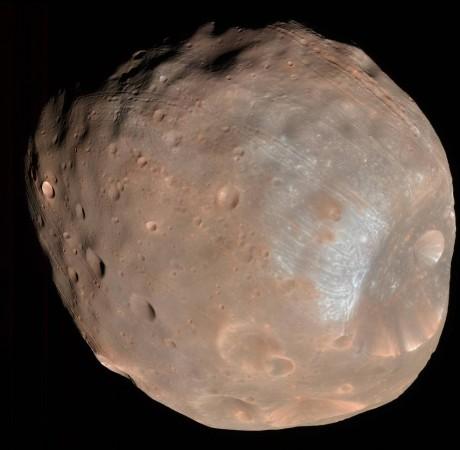
Martian moon Phobos was considered to be a potential base for human exploration, but strong solar eruptions may not make it possible.
ALSO READ: Conspiracy theorist discovers mysterious underwater pyramids near Florida using Google Earth
NASA astronomers have found that a complex electrical environment is formed on Mars' moon Phobos because of solar winds.
Astronauts and even some equipment brought to the moon for carrying out missions can get impacted adversely by this.
"We found that astronauts or rovers could accumulate significant electric charges when traversing the night side of Phobos — the side facing Mars during the Martian day," said William Farrell, lead author of the study from NASA's Goddard Space Flight Centre.
"While we don't expect these charges to be large enough to injure an astronaut, they are potentially large enough to affect sensitive equipment, so we would need to design spacesuits and equipment that minimises any charging hazard."
ALSO READ: Space Debris: These are the countries on Earth with the most space junk
As per the hypothesis, the astronauts operating robots on the Martian atmosphere from the Martian moon would reduce the considerable time delay Earth-based operators face.
Phobos is considered a possible initial base by NASA astronomers as it has weak gravity, which makes landing of spacecraft, astronauts and supplies easier, a NASA statement has revealed.
Phobos has no atmosphere or magnetosphere, and is exposed to the solar winds directly. This results in the moon absorbing electrically charged particles on its day side and creates a void on the night side, the NASA statement said.
ALSO READ: Tipsy couple faces punishment for acting way too 'cheesy' and having sex at Domino's takeaway
The electrons charge the nightside as well as the shadowed region of the moon, such as the Stickney crater.
"We found that excess charge builds up in these regions during all solar wind conditions, but the charging effect was especially severe in the wake of solar eruptions like coronal mass ejections, which are dense, fast gusts of solar wind," Farrell said in the statement.
The flow of solar wind around Phobos modelled by the astronomers revealed the build-up of static charge on the nightside and shadowed region of the Martian moon.
It was found that the static charge could reach up to 10,000 volts in some materials like the Teflon suits astronauts wore during the Apollo mission.
The astronauts remain prone to the chances of receiving a static shock on touching anything conductive which is similar to the one received on touching a metal door knob after walking on a rug.
ALSO READ: SpaceX Falcon Heavy rocket to be launched this November; updates and all you need to know
"We found that excess charge builds up in these regions during all solar wind conditions, but the charging effect was especially severe in the wake of solar eruptions like coronal mass ejections, which are dense, fast gusts of solar wind," Farrell stated.
A similar finding has been made on the north and south poles of Earth's moon.
Earth possesses an atmosphere and magnetosphere, hence remains protected from the impact of solar winds.















